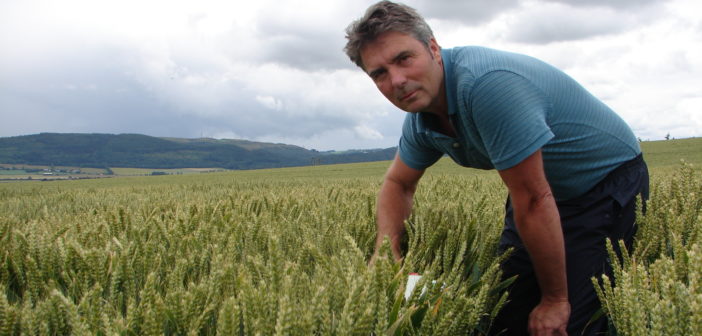A flurry of new feed wheat varieties this year is offering growers a better choice of maturity characteristics and the chance to find a combination that helps spread risk next harvest.
Depending on where you are in the UK, maturity plays differing roles in rotational management according to Scottish Rural College’s cereal variety expert Steve Hoad.
He says that in the south and east, growers may use late maturity to chase extra yield, while in the west and north early varieties help to avoid poor harvest conditions later in the summer.
With the possibility of both early- and late-maturing varieties being hit with wet weather, a spread of maturity will also hedge bets and, in most seasons, ensure at least one crop is cut in good weather.
In addition, early maturing varieties that tiller, flower and ripen sooner can be useful on light land where dry and stressful conditions can cut the potential of later-maturing varieties short.
“Mixing maturity can also give you a spread of harvest dates to ensure the wheat doesn’t interfere with the harvest of other crops. You don’t want to be too early, as you can clash with barley,” he adds.
Significant development
There has been a trend over recent seasons for new higher yielding feed wheats added to the Recommended List to be later maturing, limiting the ability to spread harvest dates.
However, Dr Hoad says the burst of new additions to the feed wheat line up for 2017-18 brings a significant development, with Shabras (-1), Freiston (0) and KWS Kerrin and Dunston (+1) offering a spread of ripening scores in the hard group 4 category.
Similarly, in the soft group 4s, LG Motown is early maturing (-1), Savello, Moulton and Hardwicke in the middle ground (0), and LG Sundance and Bennington a fraction later (+1).
Soft feed wheats such as Viscount (0), Leeds (+2) and Revelation (+3) have been popular choices for northern growers for their consistent yields and distilling potential.
As the earliest of the new soft feed varieties, Dr Hoad believes LG Motown could be a useful alternative, spreading risk and workload at harvest, plus providing high output and distilling potential.
He adds that varieties such as LG Motown also offer high untreated yields, something that has been lacking in the group 4 category and represents a major step forward for breeders.
“In the past, there has been a trade-off, with high yielding feed wheats having low untreated yields, but this new group of varieties offers both.”
Light land
Limagrain arable technical manager Ron Granger agrees that LG Motown will add excellent value in the north, but notes that it can also provide a good option further south.
Yielding 106% of controls on light land, it can suit growers on more drought prone soils where a variety with quicker spring growth, combined with good specific weight and early maturity can hold on to its yield, even after a hot and dry June.
“In addition, people are also getting earlier and earlier with oilseed rape drilling, so it could offer an early entry to the crop.
“For those with a blackgrass problem, it can also allow stale seed-beds to be chitted quickly, which is now an important part of grassweed control strategies,” says Mr Granger.
Another key characteristic for further south is orange wheat blossom midge resistance, which is lacking in the new batch of feed varieties – only LG Motown, LG Sundance and KWS Kerrin have the trait.
LG Motown’s perceived weaknesses include eyespot susceptibility and a moderate PGR-treated lodging score of 7, but Mr Granger says these characteristics are not dissimilar to other varieties on the Recommended List and can be managed.
“We have products with good activity on eyespot at the T1 fungicide timing and the standing power can be addressed with a robust split PGR programme,” he says.




